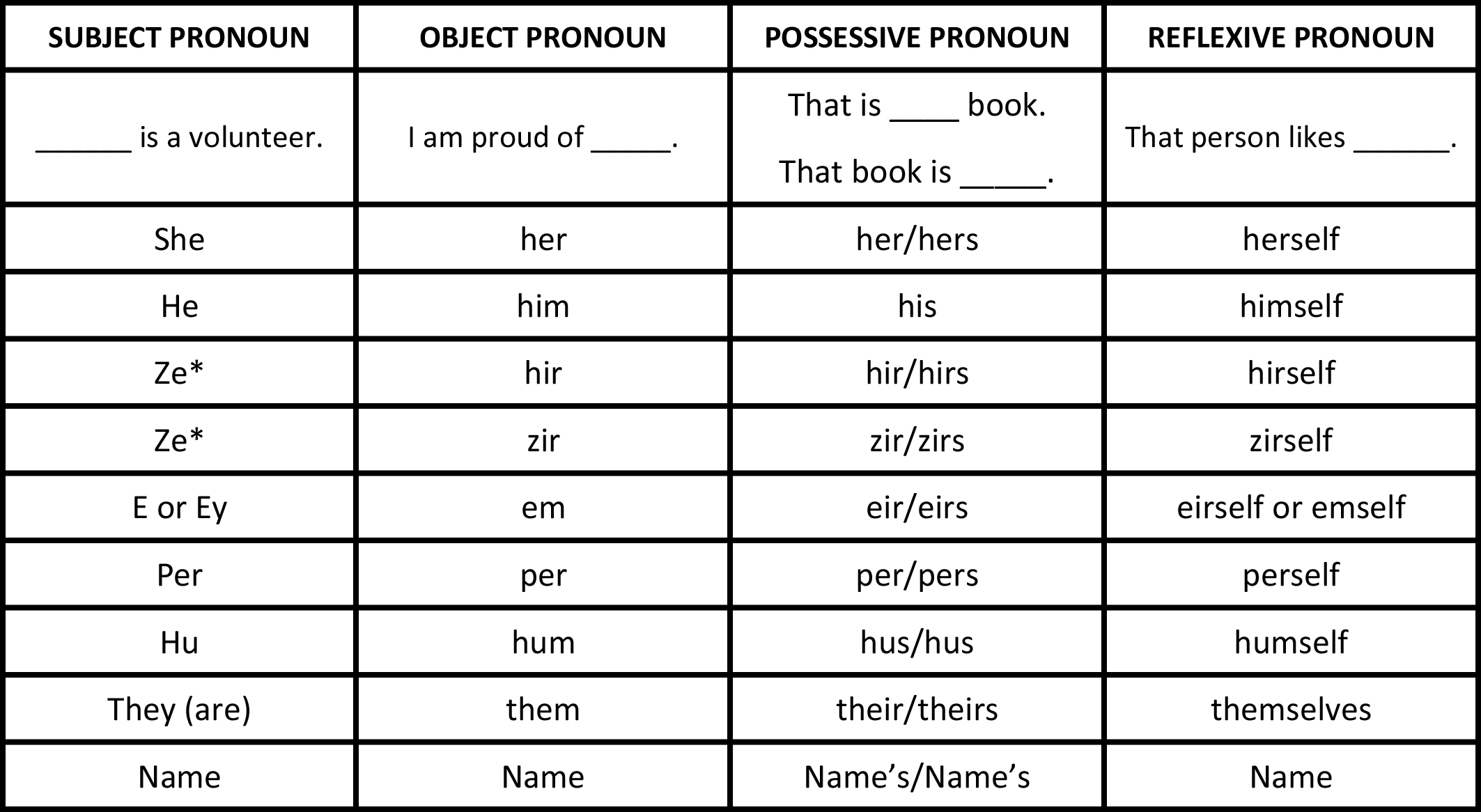Preferred Gender Pronouns
What is a pronoun?
Pronouns are words you use to refer to someone, other than the person’s name. In English, and many other languages, pronouns can also indicate the person’s gender.
Everyone uses pronouns!
How do I use a pronoun?
Commonly used gender pronouns include she/her/hers and he/him/his. For example: If Alex's pronouns are she, her, and hers, you could say "Alex ate her lunch because she was hungry." If Alex uses he/him/his pronouns, you would say “Alex ate his lunch because he was hungry.”
There are also lots of gender-neutral pronouns in use. One example is they/them/theirs. (“Alex ate their lunch because they were hungry.”) “They” is a common gender-neutral pronoun, and it can in fact be used in the singular.
Some people prefer not to use pronouns at all, and may ask that you use only first or last name.
Here is a list of some commonly used pronouns:
*Additional alternate spellings for “ze” are “zie”, “sie”, “xie”, and “xe.”
Why is it important to list your pronouns?
You cannot assume you know a person’s pronouns just by looking at them, hearing their voice, or seeing their name.
Listing your pronouns lets everyone know what you like to be called, similar to listing your name and title.
Correctly using someone's pronoun is one of the most basic ways to show your respect for their gender identity.
The best thing to do if you accidentally use the wrong pronoun for someone is to correct yourself, apologize briefly, and move on. For example, say, “Yesterday I told her- sorry, I mean him- that the meeting was cancelled.”





